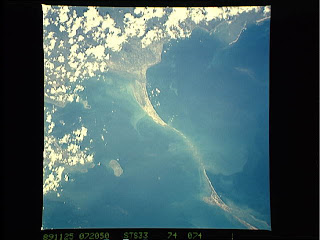
As a fellow nepali I was not sure that I could be fair and balanced when discussing this topic and it is only after a lot of rationalizing and waiting (hence the delay in the article) that I have finally decided that I CAN be fair & non judgmental. So here goes….
A few days ago after Prashant Tamang had won the title of Indian Idol, along with his hometown of Darjeeling, spontaneous celebrations had erupted in many places in neighboring Nepal & Sikkim as well. And apparently the other people in the world's largerst democracy could not stomach this.
Initially it was all fine even though the mainstream Indian press and TV News channels (who usually lap up these kind of stories) did not cover it apart from the mandatory blurb.
Then two odd things happened.
First the Hindustan Times (which incidentally has been fighting for years to prove that it is a national paper of repute like The Times Of India) came out with an article that somehow seemed to suggest that the title was won by a ‘nepali’ because of some deep seated desire of the ‘nepali-speaking’ people of Darjeeling and Sikkim to be associated with Nepal. It went on to dig up some obscure treaty that the British had signed which had robbed the current Darjeeling area from Nepal etc and also mentioned how there was a Gorkha agitation a decade back.
In short the winner and his supporters weren’t actually ‘Indians’.
Now to set the record straight, Prashant is a member of the Calcutta Police as was his late father before him.
The ‘nepali speaking’ people of Darjeeling had fought for a separate state but even at the height of the agitation they had never threatened to secede as have the ULFA etc in the other North East states.
And scores of nepali-speaking people from the hills have fought and been martyred during many of India’s wars including Kargil.
Which begs the question; “What else does one have to do to show one’s loyalty to the country?”

The second incident was even more prejudiced & bigoted.
A day after Prashant’s win, a dim-witted RJ of some FM station in Delhi (both the RJ and The FM are too obscure to name) decided that this would be the right time for him to debut his stand up comedy and cockily mentioned that now since Nepalis were becoming Indian Idols there would be no one left to guard their houses and work as watchmen.

Following the expected uproar among Nepalis the Indian media dished out the usual freedom-of-speech crap in his defense and made the protesting Nepalis sound like some intolerant hot-heads.
At this stage, I must mention that as far as Freedom-of-Expression goes, there cannot be a more passionate fanatic than myself. I have always believed in the Freedom of Expression and against any kind of censorship. However in this case it simply does not apply and not because I am Nepali.
I remember as a child we used to play a game where we used to annoy our friends by wriggling our fingers right near their noses or eyes and claim we had the right to do so as long as we were not touching any part of their face.
This argument is, I guess, the basis of the whole Freedom of Expression thing and as the childish game recognized that said freedom ends the moment we touch any part of the other person's face.
The RJ had every right to express his views (and prejudices) but he ceased to be just ‘expressing’ his views the moment he insulted the other party.
That’s precisely why there are anti-defamation laws.
And I am just speaking about a small incident involving a small group of peace loving people residing in the hills of India.
When seen on a bigger scale this prejudice and bias is all prevalent in India and esp North India.
Is it then any surprise that they do not feel part of India?
Not because they don’t want to, but because they are always reminded that they may not be…
And on a completely different note:
Almost all Indians know (or weren’t allowed to forget, depending on your perception) that the Indian National Anthem was written by Rabindranath Tagore but most people don’t know (or weren’t told) who actually composed the song.
It was Captain Ram Singh Thakur of the 1st Gorkha Rifles.
 Captain Ram Singh Thakur, extreme right, playing the violin in Gandhi's presence, possibly during one of Gandhi's visits to INA prisoners at Red Fort.
Captain Ram Singh Thakur, extreme right, playing the violin in Gandhi's presence, possibly during one of Gandhi's visits to INA prisoners at Red Fort.
Why am I bringing this up now???
Because he was an Indian of Nepali origin.
Can you imagine if he had stayed back to just become a ‘watchman’.
Jana Gana Mana would have a Bollywood tune….
Kajra Re anyone?
Source : http://en.wikipedia.org/wiki/Ram_Singh_Thakur










